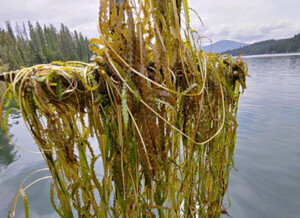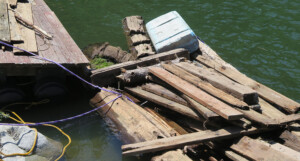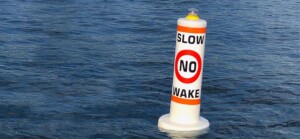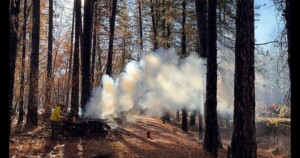AQUATIC INVASIVE SPECIES
Invasive plants or animals are typically non-native species that threaten native plants and animals. They can have significant economic impacts by damaging water quality, interfering with recreational activities, and impacting drinking and irrigation water supply. In their native environments, living populations are controlled by predators, pathogens, competitors, or limiting nutrients or minerals. When species are transported to a new environment, sometimes there are no natural checks and balances, and they become very difficult to control.
Remember to always CLEAN, DRAIN, and DRY your boat, trailer and gear when going from one waterbody to another. REPORT POTENTIAL INVASIVE SPECIES: Idaho Invasive Species Hotline [toll-free]: 1-877-336-8676
* (potential to add) The management of aquatic invasive species is conducted by the Idaho State Department of Agriculture, which targets public boat ramps and boats in an effort to prevent new introductions and performs chemical or mechanical control on current populations.
INVASIVE SPECIES IDENTIFIED IN HAYDEN LAKE
Eurasian watermilfoil (Myriophyllum spicatum) has grown aggressively in Hayden Lake. Milfoil is a submersed plant identified by its red stem and feather-like leaves. A single fragment from a milfoil plant can take root and form a new colony. Preventing fragmentation and collecting loose fragments is one of the best ways to reduce growth.
Curlyleaf pondweed (Potamogeton crispus) has wavy, serrated leaves resembling lasagna. It grows under water, frequently with Eurasian watermilfoil. It spreads by pinecone-like buds called turions that grow on the tops of the plant, fall to the lake bottom, and root in the sediment or lie dormant for years. Removing these turions is key to reducing growth.
Yellow flag iris (Iris pseudacorus) is a riparian plant commonly occurring on shorelines. Its bright yellow flower is attractive and tempting to propagate, but it out-competes native plants, is toxic to both humans and animals, and can cause skin irritation and indigestion.. It spreads quickly via seed dispersal and rhizomes (roots). Cut flower heads shortly after blooming to prevent seed development and curb spread.
Knotweed (Polygonum spp.) is an exceptionally persistent, invasive plant. It has large, heart-shaped leaves and grows from multiple bamboo-like hollow shoots, forming a shrub up to 9 feet high. It will take advantage of any available growing space and can grow through concrete. Knotweed is most effectively managed through diligent chemical application.
SPECIES POSING A FUTURE THREAT
Quagga and zebra mussels (Dreissena) are invasive species that have not yet been found in North Idaho. They are small, freshwater bivalves with triangular-shaped shells that attach to hard surfaces. They cause irreparable damage by decimating the bottom of the food chain, clogging hydropower and irrigation systems, and damaging docks and boats. Introduced in ship ballast water, they live in depths up to 400’ and reproduce exponentially.
ALERT
In 2023, quagga mussels were found in the Snake River near Twin Falls. Until this point, there were no known populations in Idaho waters. The Idaho State Department of Agriculture has enhanced its prevention and monitoring program to address this issue.
Hayden Lake is sampled biweekly for quagga/zebra mussels. Water samples are collected to monitor veligers – mussels in their earliest life stage – and surfaces such as sediment, rocks, docks and pylons are examined for adult populations.
Please ensure Hayden Lake never has to deal with this serious environmental impact.
PREVENT THE SPREAD OF INVASIVE SPECIES
 To prevent the spread of aquatic invasive species, the ISDA has mandatory boat inspection stations throughout the state, and boaters are required to travel with all exterior plugs removed from their vessel. Additionally, Idaho law mandates that all motorized and non-motorized boats purchase and display an Idaho Invasive Species sticker in order to launch and operate a vessel in Idaho.
To prevent the spread of aquatic invasive species, the ISDA has mandatory boat inspection stations throughout the state, and boaters are required to travel with all exterior plugs removed from their vessel. Additionally, Idaho law mandates that all motorized and non-motorized boats purchase and display an Idaho Invasive Species sticker in order to launch and operate a vessel in Idaho.
Clean, Drain & Dry
- Remove all plants, animals, and/or dirt from your watercraft.
- Drain all water from your watercraft, including bilge, live wells, ballast, and cooling water.
- Allow your watercraft and gear to completely dry before entering another waterbody.
- If your boat has been in infested waters or out of state, it is required to visit an inspection station before entering Idaho waters.
Inspect everything before leaving and launching.



